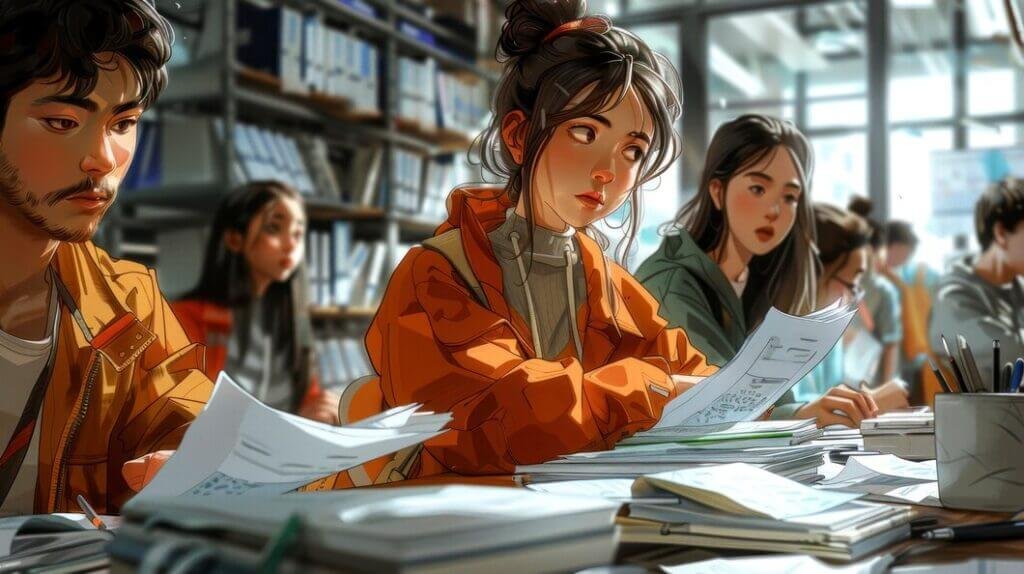Differences Between Western and Chinese Education Systems
Education is a cornerstone of societal development, shaping the minds and futures of young generations. When comparing education systems worldwide, the differences between Western and Chinese approaches stand out distinctly. Each system has its unique strengths, influenced by cultural, historical, and societal factors. In this post, we’ll explore these differences, highlighting what makes each approach special and effective in its own right. By understanding these differences, students and parents can make informed decisions, especially if considering opportunities such as studying abroad through platforms like Etudesups or Cucas.
Foundations of the Education Systems
Western Education System: Emphasis on Critical Thinking and Individuality
Western education systems, particularly those in the United States, Canada, and much of Europe, prioritize critical thinking, creativity, and individuality. From an early age, students are encouraged to ask questions, think independently, and express their opinions. This approach aims to develop well-rounded individuals who can adapt to various situations and think on their feet.
Curriculum Flexibility: In Western countries, the curriculum often allows students to choose subjects that interest them, particularly at the high school and university levels. This flexibility helps students tailor their education to their career goals and personal interests.
Interactive Learning: Classrooms in the West frequently use interactive methods, such as group discussions, projects, and presentations. This participatory style helps students develop communication skills and the ability to work collaboratively.
Chinese Education System: Focus on Discipline and Academic Excellence
In contrast, the Chinese education system is known for its rigor and discipline. Rooted in a culture that highly values education, Chinese schools emphasize academic excellence and hard work. The system is designed to produce students who are highly knowledgeable and capable of achieving top results in competitive exams.
Structured Curriculum: The Chinese curriculum is highly structured, with a strong focus on core subjects like mathematics, science, and literature. This structured approach ensures that students acquire a solid foundation in essential academic areas.
Memorization and Mastery: Chinese education places a significant emphasis on memorization and mastery of content. While this can lead to high levels of knowledge retention, it may sometimes come at the expense of creativity and critical thinking.
Teaching Methods: Contrasts and Commonalities

Western Methods: Encouraging Inquiry and Innovation
In Western classrooms, teachers act more as facilitators than authoritative figures. They encourage students to explore, question, and experiment. This method fosters an environment where students feel safe to express their ideas and learn from mistakes.
Project-Based Learning: Many Western schools employ project-based learning, where students work on complex questions or problems over an extended period. This method promotes deeper understanding and application of knowledge.
Use of Technology: Western education systems often integrate technology into the learning process. Smartboards, tablets, and educational software are common tools that make learning more engaging and interactive.
Chinese Methods: Emphasizing Effort and Perseverance
Chinese teachers, on the other hand, often adopt a more authoritative role in the classroom. The teaching style is more lecture-based, with a clear emphasis on discipline and respect for the teacher.
Lecture-Based Instruction: Lectures are a staple in Chinese education, with teachers delivering content in a clear and structured manner. This method ensures that all students receive the same foundational knowledge.
Frequent Testing: Regular testing and examinations are a critical part of the Chinese education system. These assessments keep students on track and ensure that they understand and can recall the material.
Assessment and Evaluation
Western Approach: Holistic Evaluation
Western education systems often use a variety of assessment methods to evaluate student performance. These can include written exams, projects, presentations, and participation.
Continuous Assessment: Students are frequently assessed throughout the academic year, which helps teachers provide ongoing feedback and support.
Diverse Metrics: Western systems consider a wide range of factors, including creativity, problem-solving abilities, and teamwork, rather than relying solely on test scores.
Chinese Approach: Exam-Centric Evaluation
In China, examinations play a pivotal role in the education system. Major exams can determine a student’s academic and career trajectory, making them a high-stakes aspect of education.
Gaokao: The Gaokao, or National College Entrance Examination, is perhaps the most well-known example. This exam determines university placement and is known for its difficulty and comprehensiveness.
Frequent Testing: Besides major exams, students face frequent testing throughout their schooling to ensure they remain focused and diligent in their studies.
Classroom Environment and Culture
Western Classrooms: Informal and Student-Centered
Western classrooms tend to be more informal and student-centered. The focus is on creating a supportive environment where students feel comfortable expressing themselves and participating actively.
Teacher-Student Interaction: Teachers often interact with students on a first-name basis, promoting a sense of equality and approachability.
Collaborative Learning: Group work and collaboration are common, helping students develop social skills and learn from one another.
Chinese Classrooms: Formal and Teacher-Centered
Chinese classrooms are typically more formal and teacher-centered. Respect for the teacher and adherence to classroom rules are paramount.
Respect and Discipline: Students are expected to show great respect for their teachers, often standing up when the teacher enters the room and addressing them with formal titles.
Focus on Individual Achievement: While collaboration occurs, there is a strong emphasis on individual achievement and competition, particularly in preparation for exams.
Higher Education: Comparing Universities
Western Universities: Flexibility and Broad Learning
Western universities are known for their flexibility and breadth of learning opportunities. Students can choose from a wide range of majors and minors, and there is often an emphasis on liberal arts education.
Interdisciplinary Studies: Many universities encourage interdisciplinary studies, allowing students to combine different fields and explore diverse interests.
Extracurricular Activities: Western universities offer numerous extracurricular activities, from sports to arts to student organizations, promoting a well-rounded educational experience.
Chinese Universities: Specialization and Rigorous Training
Chinese universities, such as those accessible through Etudesups, focus on specialization and rigorous academic training. The curriculum is often more structured, with a strong emphasis on the student’s chosen field of study.
Specialized Programs: Students typically choose their specialization early on and follow a set path of study, which can lead to a deep and thorough understanding of their field.
Research Opportunities: Chinese universities are increasingly emphasizing research and development, providing students with opportunities to engage in cutting-edge projects.

The Role of Etudesups in Bridging the Gap
For students considering studying abroad, understanding these differences can be crucial. Platforms like Etudesups play a vital role in bridging the gap between these education systems, helping students navigate the complexities of applying to and enrolling in Chinese universities.
Scholarship Opportunities: Etudesups helps students find scholarships, making education abroad more accessible and affordable.
Application Assistance: The platform provides guidance on the application process, ensuring that students meet all requirements and deadlines.
Cultural Orientation: Understanding the cultural differences in education can help students prepare for and adapt to their new environment, making the transition smoother and more successful.
Conclusion: Embracing Diversity in Education
In conclusion, both Western and Chinese education systems offer unique benefits and face their own challenges. By understanding these differences, students can make informed choices about their education paths. Whether one prefers the critical thinking and flexibility of Western education or the discipline and rigor of the Chinese system, platforms like Etudesups can help students find the best opportunities and navigate their educational journeys successfully.





